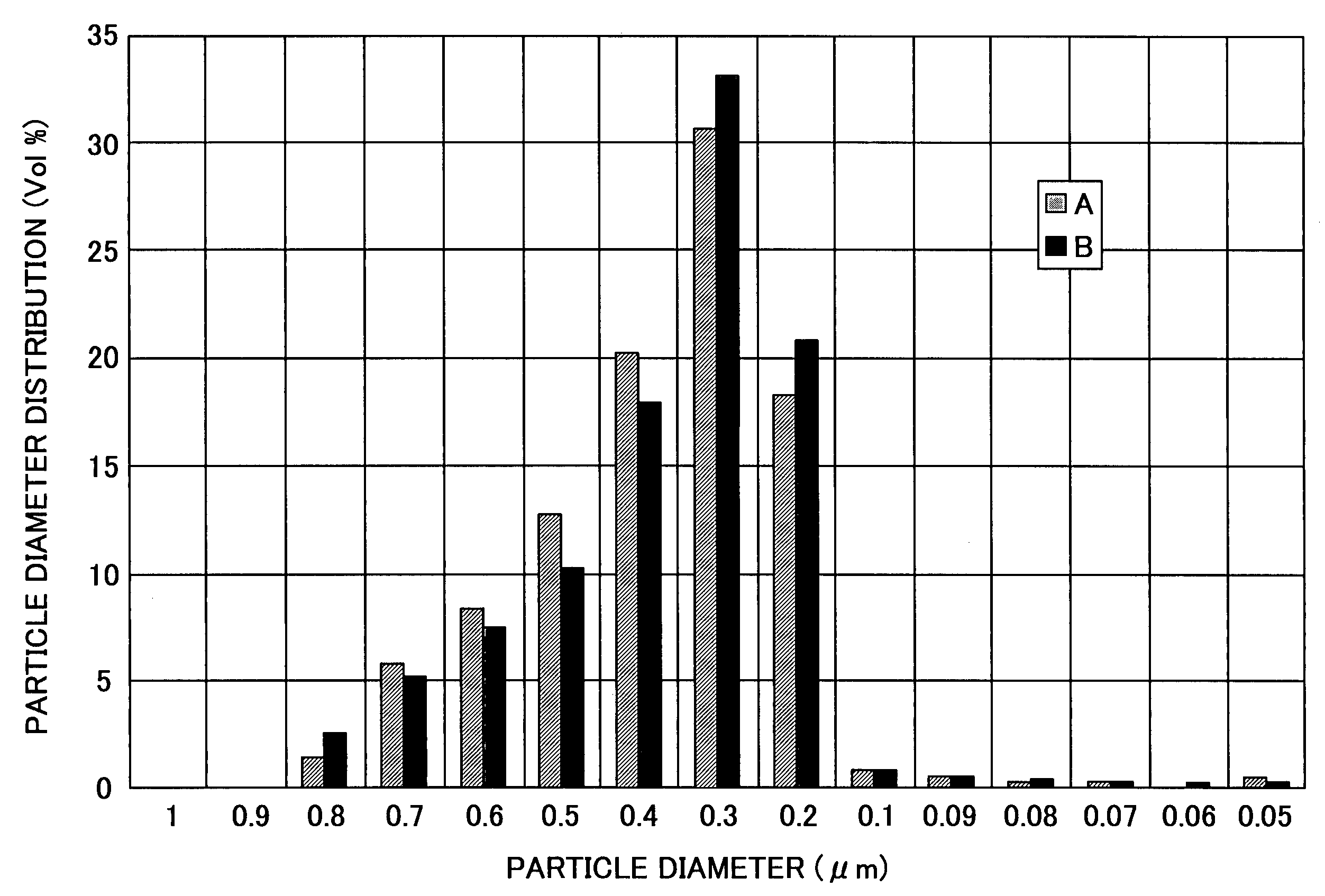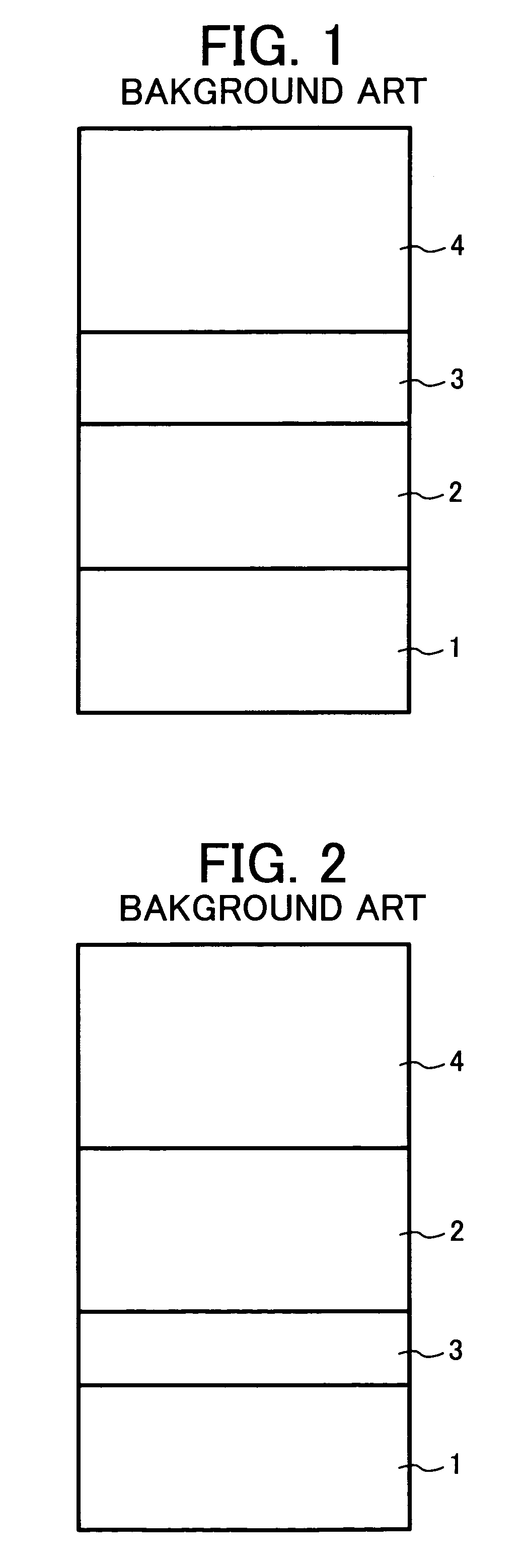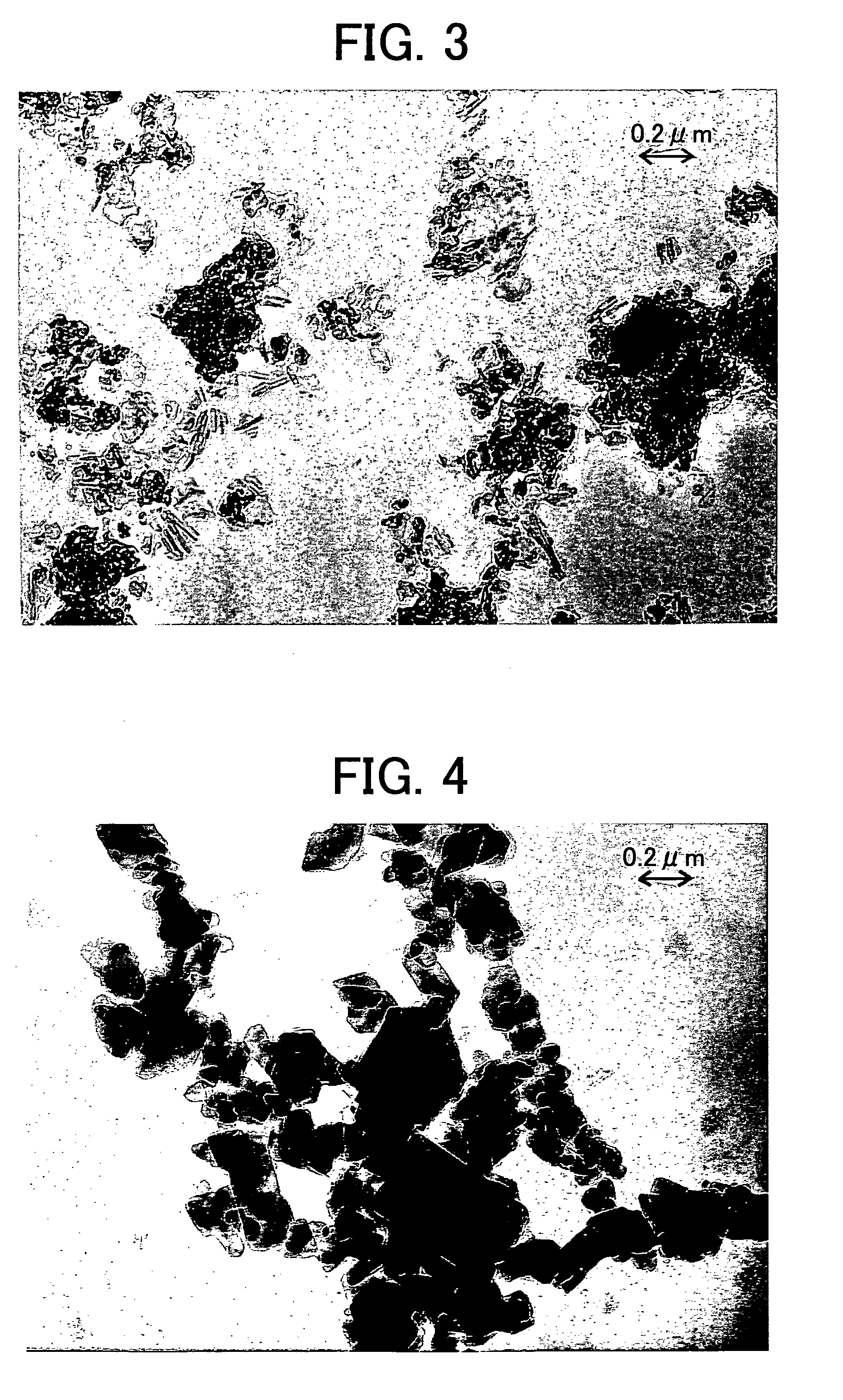Electrophotographic photoreceptor, method for manufacturing the electrophotographic photoreceptor, and image forming apparatus and process cartridge using the electrophotographic photoreceptor
a photoreceptor and electrophotography technology, applied in the field of electrophotographic photoreceptors, can solve the problems of mechanical ablation of the uppermost layer of the photoreceptor, inability to use the photoreceptor with a smaller diameter but a shorter life, and inability to produce images. stably, increase the residual potential
- Summary
- Abstract
- Description
- Claims
- Application Information
AI Technical Summary
Benefits of technology
Problems solved by technology
Method used
Image
Examples
synthesis example 1
[0321]The procedure for preparation of the aqueous wet cake in Comparative Synthesis Example 1 was repeated. Then the pigment was subjected to the crystal change treatment mentioned below, to prepare a titanyl phthalocyanine crystal having a primary particle diameter smaller than that of the crystal prepared in Comparative Synthesis Example 1.
[0322]Specifically, 60 g of the aqueous wet paste, which had not been subjected to a crystal change treatment and which has a solid content of 15% by weight, was mixed with 400 g of tetrahydrofuran (THF) and the mixture was strongly agitated at room temperature using a homomixer MARK IIf model manufactured by Kenis Ltd., whose rotor was rotated at a revolution of 2,000 rpm. In this case, the ratio of the pigment to the crystal change solvent (THF) was 1:44. When the color of the paste was changed from dark blue to light blue (20 minutes after the start of agitation), the agitation was stopped, and the dispersion was filtered under a reduced pre...
preparation example 1
Dispersion Preparation Example 1
[0331]A dispersion having the following formula was prepared using the titanyl phthalocyanine pigment 1 prepared in Comparative Synthesis Example 1.
[0332]
Titanyl phthalocyanine pigment 1 15 partsPolyvinyl butyral 10 parts(S-LEC BX-1 from SekisuiChemical Co., Ltd.)2-butanone280 parts
[0333]At first, the polyvinyl butyral resin was dissolved in 2-butanone. Then titanyl phthalocyanine pigment 1 was dispersed for 30 minutes in the resin solution using a dispersion machine including PSZ balls with a particle diameter of 0.5 mm while the rotor was rotated at a revolution of 1200 rpm. Thus, a dispersion 1 was prepared.
Dispersion Preparation Examples 2-9
[0334]The procedure for preparation of the dispersion 1 in Dispersion Preparation Example 1 was repeated except that titanyl phthalocyanine pigment 1 was replaced with titanyl phthalocyanine pigments 2-9. Thus, dispersions 2-9 were prepared.
preparation example 10
Dispersion Preparation Example 10
[0335]The dispersion 1 prepared in Dispersion Preparation Example 1 was subjected to filtering using a cotton wind cartridge filter TCW-1-CS with an effective pore diameter of 1 μm, which is manufactured by ADVANTECH, while applying a pressure using a pump. Thus, a dispersion 10 was prepared.
PUM
 Login to View More
Login to View More Abstract
Description
Claims
Application Information
 Login to View More
Login to View More - R&D
- Intellectual Property
- Life Sciences
- Materials
- Tech Scout
- Unparalleled Data Quality
- Higher Quality Content
- 60% Fewer Hallucinations
Browse by: Latest US Patents, China's latest patents, Technical Efficacy Thesaurus, Application Domain, Technology Topic, Popular Technical Reports.
© 2025 PatSnap. All rights reserved.Legal|Privacy policy|Modern Slavery Act Transparency Statement|Sitemap|About US| Contact US: help@patsnap.com



